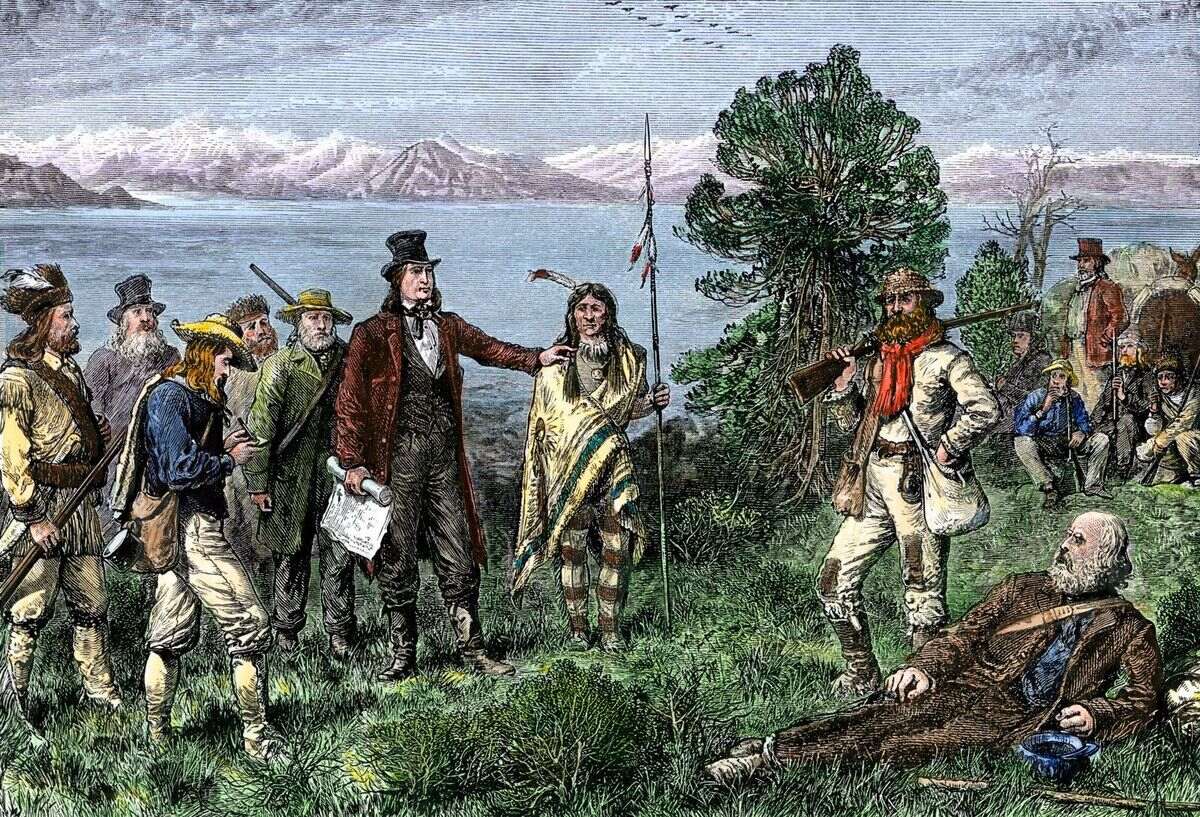
Mormon history is filled with intriguing events, influential figures, and unique beliefs. Founded by Joseph Smith in the early 19th century, the Church of Jesus Christ of Latter-day Saints has grown from a small group of followers in New York to a global faith with millions of members. From the translation of the Book of Mormon to the migration to Utah, each chapter of Mormon history offers a glimpse into the trials and triumphs of its people. Whether you're curious about the pioneers' journey, the establishment of Salt Lake City, or the church's modern-day impact, these 39 facts will provide a comprehensive look into the rich tapestry of Mormon history.
Key Takeaways:
- Mormon history is filled with fascinating events and figures, from Joseph Smith's vision to the migration to Utah. Key figures like Brigham Young and Emma Smith played pivotal roles in shaping the history of Mormonism.
- Mormonism's unique traditions, such as Pioneer Day and Baptism for the Dead, set it apart. The LDS Church's global membership and humanitarian efforts continue to impact the world today.
The Origins of Mormonism
Mormonism, also known as the Latter-day Saint movement, has a rich history filled with fascinating events and figures. Let's dive into some intriguing facts about its origins.
- Joseph Smith's Vision: In 1820, Joseph Smith claimed to have a vision of God and Jesus Christ, which led to the founding of Mormonism.
- The Book of Mormon: Published in 1830, this sacred text is considered another testament of Jesus Christ by Mormons.
- Golden Plates: Smith said he translated the Book of Mormon from golden plates shown to him by an angel named Moroni.
- First Church: The Church of Christ, the first Mormon church, was established on April 6, 1830, in Fayette, New York.
- Early Persecution: Early Mormons faced significant persecution, leading them to move multiple times in search of a safe haven.
Key Figures in Mormon History
Several key figures played pivotal roles in shaping the history of Mormonism. Here are some notable individuals and their contributions.
- Brigham Young: After Joseph Smith's death, Brigham Young led the Mormons to Utah, where they established Salt Lake City.
- Emma Smith: Joseph Smith's wife, Emma, was instrumental in the early church, compiling the first hymnal and supporting her husband.
- Hyrum Smith: Joseph's brother, Hyrum, was a close confidant and leader within the church until his death alongside Joseph in 1844.
- John Taylor: The third president of the LDS Church, Taylor was a staunch defender of Mormonism and survived the attack that killed Joseph Smith.
- Eliza R. Snow: A prominent poet and leader, Snow played a crucial role in organizing the Relief Society, a women's organization within the church.
Migration and Settlement
The journey of the Mormons from the eastern United States to the western frontier is a tale of resilience and determination.
- Nauvoo, Illinois: Before moving west, Mormons established a thriving community in Nauvoo, Illinois, in the 1840s.
- The Mormon Trail: This 1,300-mile route was used by thousands of Mormons migrating to Utah between 1846 and 1869.
- Winter Quarters: Located in present-day Omaha, Nebraska, Winter Quarters served as a temporary settlement for Mormons during their westward migration.
- Salt Lake Valley: In 1847, Brigham Young declared the Salt Lake Valley as the new home for the Mormons, famously stating, "This is the right place."
- Handcart Companies: Some Mormon pioneers used handcarts instead of wagons to travel to Utah, enduring extreme hardships along the way.
Beliefs and Practices
Mormon beliefs and practices set them apart from other Christian denominations. Here are some key aspects.
- Restorationism: Mormons believe in the restoration of the original church established by Jesus Christ.
- Modern Revelation: They hold that God continues to reveal truths to prophets today, just as in biblical times.
- Temple Worship: Temples are considered sacred spaces where special ordinances, such as eternal marriages, are performed.
- Word of Wisdom: This health code advises against consuming alcohol, tobacco, coffee, and tea.
- Missionary Work: Young Mormons often serve as missionaries, spreading their faith worldwide.
Controversies and Challenges
Mormonism has faced numerous controversies and challenges throughout its history. Here are some notable examples.
- Polygamy: Early Mormons practiced polygamy, which led to significant legal and social challenges. The LDS Church officially discontinued the practice in 1890.
- Mountain Meadows Massacre: In 1857, a group of Mormons and Native American allies killed over 100 emigrants in Utah. This event remains a dark chapter in Mormon history.
- Exodus from Missouri: In 1838, Mormons were expelled from Missouri under an executive order, known as the "Extermination Order," issued by Governor Lilburn Boggs.
- Civil Rights: The LDS Church faced criticism for its past policies regarding race, particularly the exclusion of Black members from the priesthood until 1978.
- Prop 8: The church's involvement in California's Proposition 8, which sought to ban same-sex marriage, sparked significant controversy and protests.
Modern-Day Mormonism
Today, Mormonism continues to evolve and adapt. Here are some facts about its current state.
- Global Membership: The LDS Church has over 16 million members worldwide, with significant growth in Latin America, Africa, and Asia.
- Humanitarian Efforts: The church is known for its extensive humanitarian work, providing aid and disaster relief globally.
- Family History: Mormons place a strong emphasis on genealogy, operating one of the largest family history libraries in the world.
- General Conference: Held twice a year, this event features addresses from church leaders and is broadcast to millions of members.
- BYU: Brigham Young University, owned by the LDS Church, is one of the largest private universities in the United States.
Cultural Impact
Mormonism has left a lasting impact on American culture and beyond. Here are some ways it has influenced society.
- Mormon Tabernacle Choir: This world-renowned choir has performed for presidents and at major events, showcasing Mormon musical talent.
- Mitt Romney: The former Massachusetts governor and presidential candidate brought significant attention to Mormonism during his campaigns.
- "The Book of Mormon" Musical: This satirical Broadway show, created by the makers of "South Park," has brought Mormonism into popular culture.
- Family Values: Mormons are often associated with strong family values, influencing discussions on family and morality.
- Utah's Influence: The state of Utah, with its significant Mormon population, has a unique cultural and political landscape shaped by the church.
Unique Traditions
Mormonism has several unique traditions that distinguish it from other faiths. Here are a few.
- Pioneer Day: Celebrated on July 24, this holiday commemorates the arrival of the first Mormon pioneers in the Salt Lake Valley.
- Fasting: Mormons fast for 24 hours once a month, donating the money saved from meals to help those in need.
- Family Home Evening: Held weekly, this tradition involves families spending time together, often with a spiritual lesson and activities.
- Baptism for the Dead: Mormons perform proxy baptisms for deceased individuals, believing it offers them a chance to accept the gospel in the afterlife.
The Final Word on Mormon History
Mormon history is full of fascinating events and unique traditions. From the founding by Joseph Smith in the early 19th century to the migration to Utah led by Brigham Young, the story of the Latter-day Saints is one of resilience and faith. The Book of Mormon, a central text, has influenced millions worldwide. The practice of polygamy, though now largely abandoned, remains a controversial chapter. Today, the Church of Jesus Christ of Latter-day Saints is a global organization with a significant presence in many countries. Understanding these key facts provides a better appreciation of the rich tapestry that makes up Mormon history. Whether you're a history buff or just curious, these insights offer a glimpse into a unique American religious movement.
Frequently Asked Questions
Was this page helpful?
Our commitment to delivering trustworthy and engaging content is at the heart of what we do. Each fact on our site is contributed by real users like you, bringing a wealth of diverse insights and information. To ensure the highest standards of accuracy and reliability, our dedicated editors meticulously review each submission. This process guarantees that the facts we share are not only fascinating but also credible. Trust in our commitment to quality and authenticity as you explore and learn with us.


